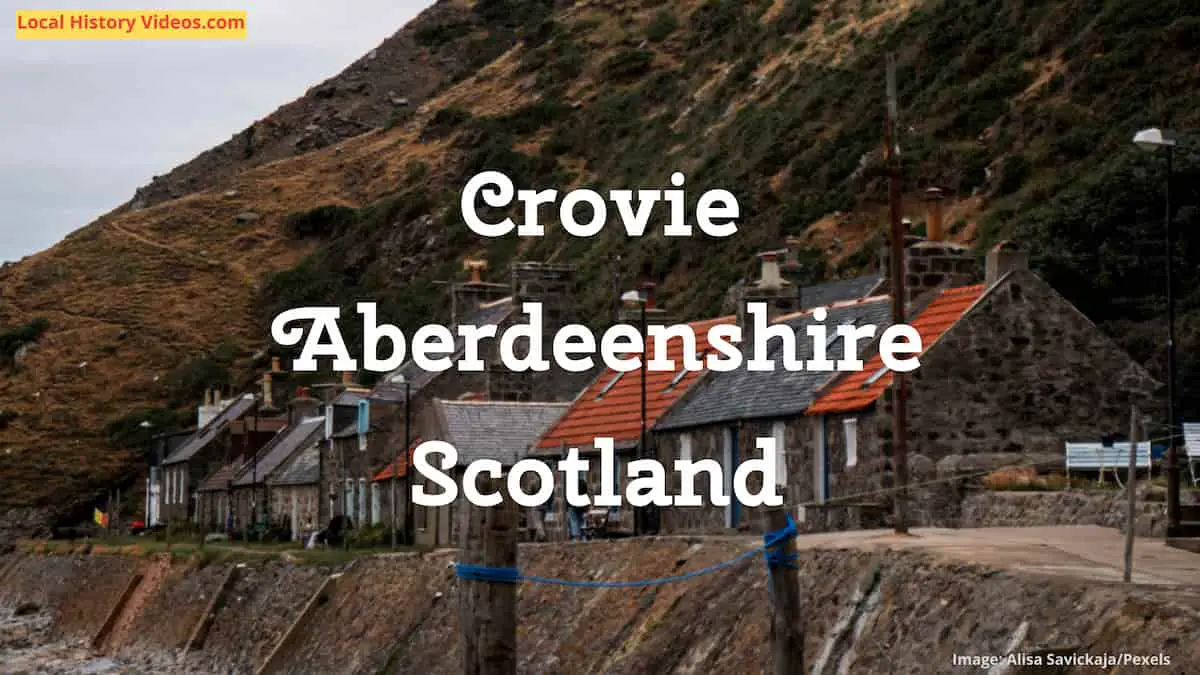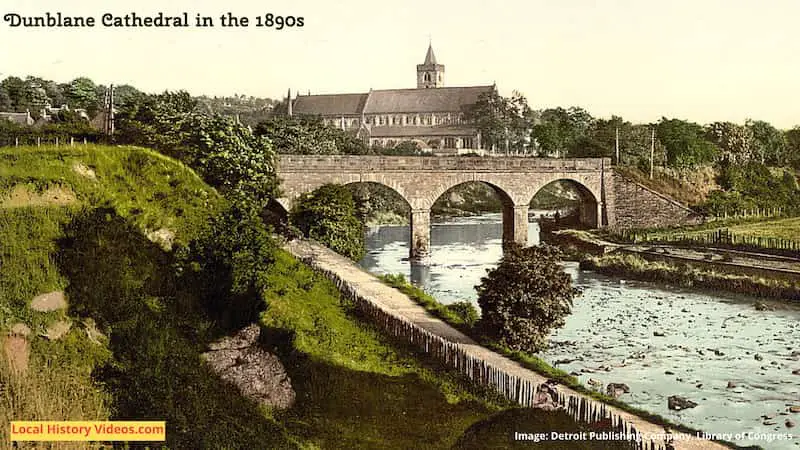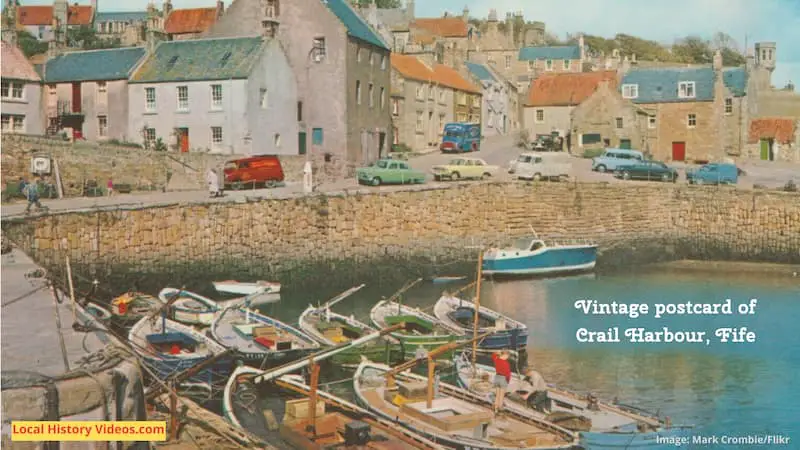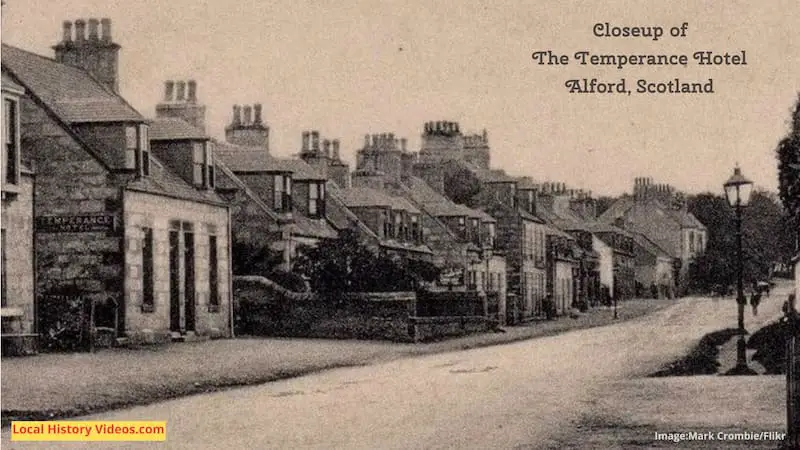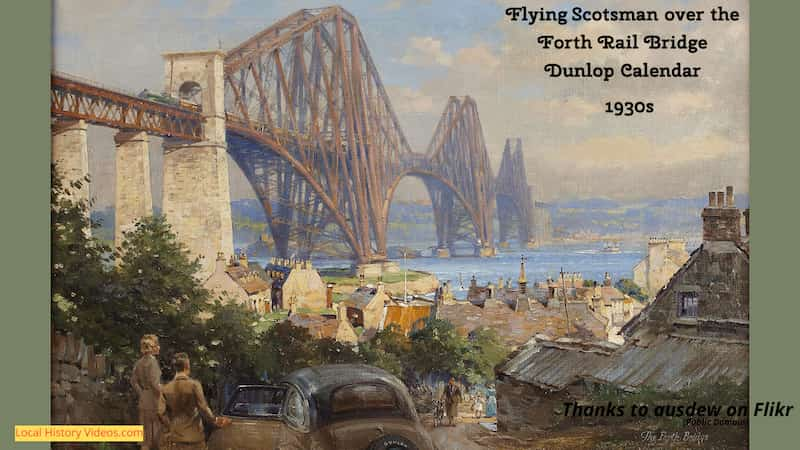Glimpse history through old images of Crovie, a small village in Aberdeenshire, Scotland.
Old Photos of Crovie
Old Photographs Of Crovie Aberdeenshire Scotland: Tourscotland (YouTube)
A Bit of Crovie History
Extract from:
North sea pilot. Pt. 1. 2nd- ed.
[With] Suppl. [and] Admiralty notices to mariners. [1st] [With] Suppl. [and] Admiralty notices to mariners, by Admiralty hydrogr. dept
Published in 1868
Page 106
“The village of Gardenston is at the middle of the head of Gardenston bay, and that of Crovie also skirts the shore within Troup head; the former is so shaded by steep braes that it is deprived of the rays of the sun for many weeks of the year: its church, standing high upon a brae on the east side of the harbour, is prominent.
Gardenston is a considerable fishing station, 60 boats and 130 men and boys belong to it, and 62 boats and 124 men and boys to Crovie, but during the season they employ altogether 460 men.
Its small harbour, formed by two good piers, is partly protected by a high ridge of conglomerate rock, named Craig Dagerty, which, being 25 feet above high water, serves to break the force of the sea. In north-easterly winds, there is considerable run into the harbour, but when the wind veers to the N.N.W. Craig Dagerty intercepts the sea, and the harbour is smooth. The western approach to the harbour is between the south end of Craig Dagerty and an iron beacon standing upon the extremity of some ledges which project from the shore.”
Extract from:
James Turner, Or, how to Reach the Masses
By Elizabeth MACHARDIE, Reginald RADCLIFFE
Published in 1875
Pages 32 & 33
Gardenstown, to which he now proceeded, is a village on the coast, about five or six miles east from Macduff, and, with two other villages – Crovie and Pennan – in the same neighborhood, was notorious for spiritual death and wickedness. Here, then, his work had to be carried on under the most unpropitious circumstances—a weak body, weather of unusual severity (the ground being covered to a great depth with snow), and people not only indifferent but positively hostile. Yet the set time for blessing was come, and nothing could hinder it.
Here, as in other places, his days were spent in conversing with anxious souls, and in visiting from house to house. One old man received him kindly, and after talking for a little, proposed a game of cards or draughts. But when the proposal was declined and his soul made the subject of conversation, he at once understood that his visitor was no other than “that blackguard Turner” and ordered him out. I do not know how it was with the old man, for he died soon after, but most of his family were brought to a knowledge of the truth, and are now consistent followers of the Lord Jesus. Many other fruits of his labors in the district yet remain, especially young men, many of whom, like their spiritual father, labor much in the Lord’s service. Two of them in particular, having passed through the ordinary course of study, are now “fishers of men.”
An individual residing in Gardenstown thus describes the change: – “Some have been raised from ignorance, vice, and wretchedness to respectability, influence, and happiness. They have changed their obscene language for the sweet language of Canaan – their profane songs for the songs of Zion – the dance for the prayer-meeting – and the time and the means which were formerly spent in the dram-shop are now employed in seeking to promote the interests of religion. In short, the general aspect of the community is changed for the better. Drink was the besetting sin of those places; now it is ashamed, hiding its face in the streets. There is not now half the number of public-houses in this district that there was formerly, while in the village of Crovie not a drop of spirits can be had. Before Mr. Turner came into this district, family worship was a thing unknown in Crovie, while in Gardenstown, it was little attended to. Now there is scarcely a home but has its altar, while the prayer-meetings commenced by him are kept up with life in both villages.”
Extract from:
Notes on the Folk-lore of the North-east of Scotland
by Walter Gregor
Published in 1881
Page 100
“In Crovie, in Banffshire, the marriage very often takes place on Saturday. During the week of the marriage, the bridegroom does not go to sea. The bride’s plinisan is taken home on Thursday. It is counted unlucky to take it home on Friday. In one case, the carter who was to take the plinisan from Gardenston to Crovie could not do so on Thursday but on Friday. Such a thing could not be allowed, and after nightfall it was put into a boat and taken across the bay. One part of it is always a stool.
The bridegroom is not allowed to enter the house during the time of the feast. His turn is after all the guests have been served.”
More about Scotland
- Old Images of Dunblane, Scotland
- Old Images of Fife, Scotland
- Old Images of the Edinburgh Festival
- Old images of Dunnottar Castle, Aberdeenshire
- Old images of Crathie Kirk, Aberdeenshire
- Old Photographs of Bieldside, Aberdeen
- Old images of Isle of Lewis, Outer Hebrides
- Old images of Cairnburg, Scotland
- Old images of Broadsea, Scotland
- Old images of Braemar, Scotland
- Old images of Banff, Scotland
- Old images of Banchory, Scotland
- Old images of Ballater, Scotland
- Old images of Auchenblae, Scotland
- Old Images of Alford, Scotland
- Old Photos of Aboyne, Aberdeenshire
- Old images of Edinburgh, Scotland
- Old Images of Cellardyke
- Old Images of the Forth Bridge at Queensferry
- Old images of Dinnet in Aberdeenshire

